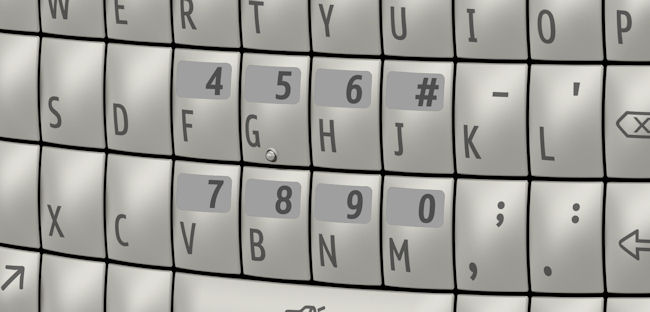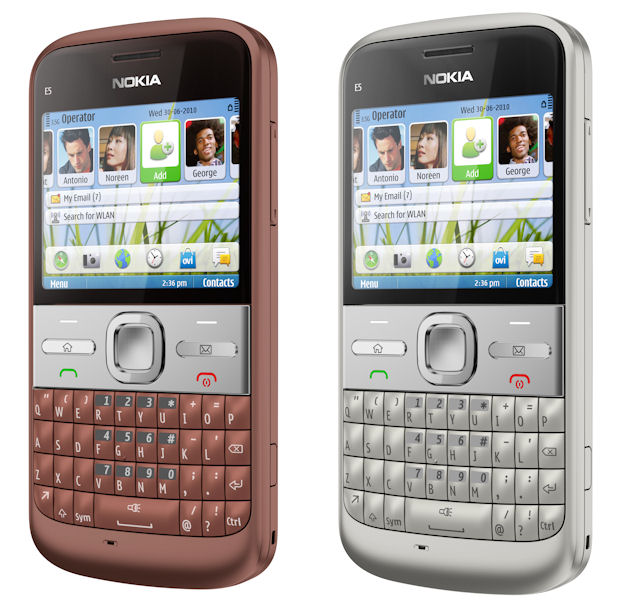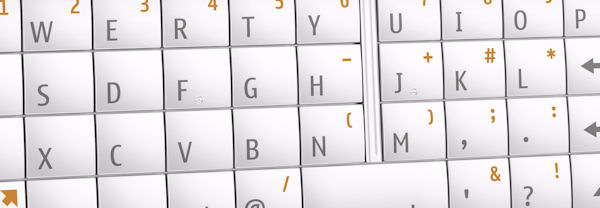Nokia seize the qwerty zeitgeist in the mass market
Today's announcement of the Nokia C3, C6 and E5 reinforce Nokia's embracing of a trend that has been apparent for a while now. Two years ago, 'txt spk' was in and mobile communications were centred around SMS. All that mattered was getting your message across to the single recipient. Then along comes social networking - Facebook, Twitter, MySpace, where your scribblings (status updates and replies) would be read by dozens, if not hundreds or thousands of others. Now txt spk wasn't good enough and actual words were needed. Which, for those who couldn't master predictive text, meant QWERTY (or maybe people just want to type more - Ed).
As always, I'm kept in touch with the latest trends and fashions in the mobile world by my daughter. By watching what she and her peers are doing, and by being dragged (willingly) into phone shops up and down the land, I get to see what's out, what's popular and how much everything is selling for.
We've had QWERTY-equipped phones for years, of course, with the Nokia Communicators as the technology's biggest proponent. Devices like the Treo 270 from Handspring and the early Blackberries all brought QWERTY keyboards to the geeks and professionals of the world in a miniaturised, but still functional, front-facing, candy-bar form factor. But they were expensive.
But now we've started to see, thanks to the aforementioned new use cases, QWERTY candy-bars appearing at much lower prices. Suddenly devices like the Blackberry Curve at £230 and the Nokia E72 at £300 look rather expensive, sitting side by side on the shelf with phones like the 'Samsung Genio QWERTY' and 'Alcatel O800' looking suspiciously similar to the previous two devices, yet at only £50 or so on 'pay as you go', with no contract or commitments. That's a huge price gap. Even Nokia's E63 still retails at around £170.

So here we have the C3 (running Series 40), expected to come in on pay as you go at a lot less than £100, firmly getting Nokia onto the same shelf as these other (perhaps lesser) brands, with the highly-specced E5 expected to be around £140 on pay as you go - admittedly, this is probably on the next (pricing) shelf along, but it's not totally out of reach considering it's got free navigation and all the other Ovi services and Symbian software.
The C6 is slightly more expensive and, arguably the most interesting of the three new launches because it tries to integrate several different trends and desires. Expected to be around £220 SIM-free, meaning that most buyers will probably pick it up for free on a £20/month contract, it combines the price of the 5800 with the QWERTY keyboard of the 5730 (and E75) and the full kinetic experience of the N97, including widgetised homescreen and latest Maps and other services. It represents very good value for money, although once you're talking about the (perceived minor) difference between £20/month and £25/month, a buyer's choice is going to be more down to how much they want each device, rather than relying on mere price.
Nokia's not alone in embracing the burgeoning QWERTY market - every other manufacturer is doing likewise, including some who can knock out hardware very cheaply indeed. Which makes Nokia's move anything but a sure fire success - it's going to have to fight hard in the notoriously competitive mass market to get buyers to recognise the quality and depth of the two Symbian-powered phones here, in particular.
Credit to Nokia for riding the QWERTY wave in such style though. As for the three handsets, the three different members of my family are eyeing them up - I'll let you guess which person is attracted to which one - the very fact that each of us likes (and wants) a different one is probably a very, very good sign for Nokia.
-- Steve Litchfield, AAS, April 2010

Here comes the keyboard cavalry
Nokia have made a bold statement today with the launch of the C3, C6 and E5. Nokia is standing up and saying that “keyboards are cool”. The three devices announced during the Everyone Connect virtual event are aimed at the mid and low end of the market. They all have their focus firmly on the connected generation, with email, IM and social networking heavily promoted in the marketing materials.
But it's the decision on the keyboards that Nokia have made that impresses me. Given the move towards large-screened PDA type devices in some quarters (devices like the iPhone and the N900, to point out two), the promotion of these mobiles is a strong statement of how Nokia read the market for people communicating on the move. What Nokia have done, in my opinion, makes perfect business sense. They are continuing the path of pushing the skills they learned in the high end smartphone space and using their huge economy of scale to take these lessons to the lower end of the market.
While it may be a new area for smartphones like the C5 and E6, it is not a new area for Nokia. They already have a huge number of sales in this area, which means they have something valuable. Knowledge of the users at this end of the market. They typical person looking for a free handset at a £20/month contract, or one happy to pay up to £100 for a locked pay as you go device is not the same as someone who'll go for the N97 mini unlocked, direct from Nokia.
These devices are built to a budget, there will be compromises when compared to the top of the line phones, but the form factor and services that are going to be delivered with the E5 and the C6 are unlike anything else in this market space. Nokia's raft of online services under the Ovi banner mean that you don't just buy the phone, but you buy a solution.

I know that reeks of marketing speak, but when you pair up good hardware with good software you have a package that is more than the sum of the parts. Through Ovi, every single phone pushed out by Nokia can have access to mappinig and routing data, a full (and legal) music store, an application store and consumer push messaging.
Add to that the Nokia Communities client (Nokia messaging for Social Networks), which provides a gateway to the social networks of Twitter and Facebook (with more to comes), and you see a strong social messaging software package. There's room for improvement of course, most notably in terms of deeper platform integration, but the key functionality is in place.
Put together that analysis of the market, alongside Nokia's long term goals of driving software and services to the lower tiers, with a consistent hardware platform, and you have an announcement that might not get those waiting for the new high-end handsets excited, but is probably more important to Nokia in the long run.
-- Ewan Spence, April 2010.
Either that or someone in Finland has a big grid with the box in the column marked “low-range” and the row marked “Qwerty keyboard” being obviously empty, and the perfectionists decided to fill it.
